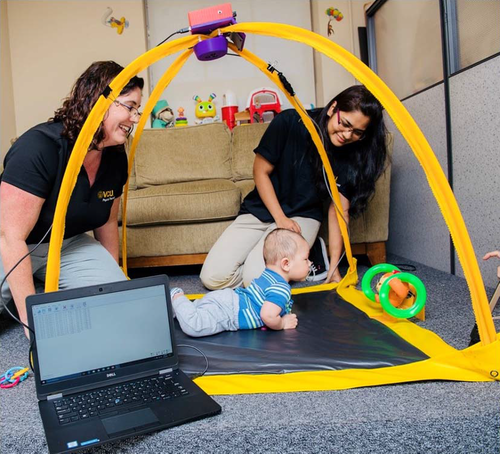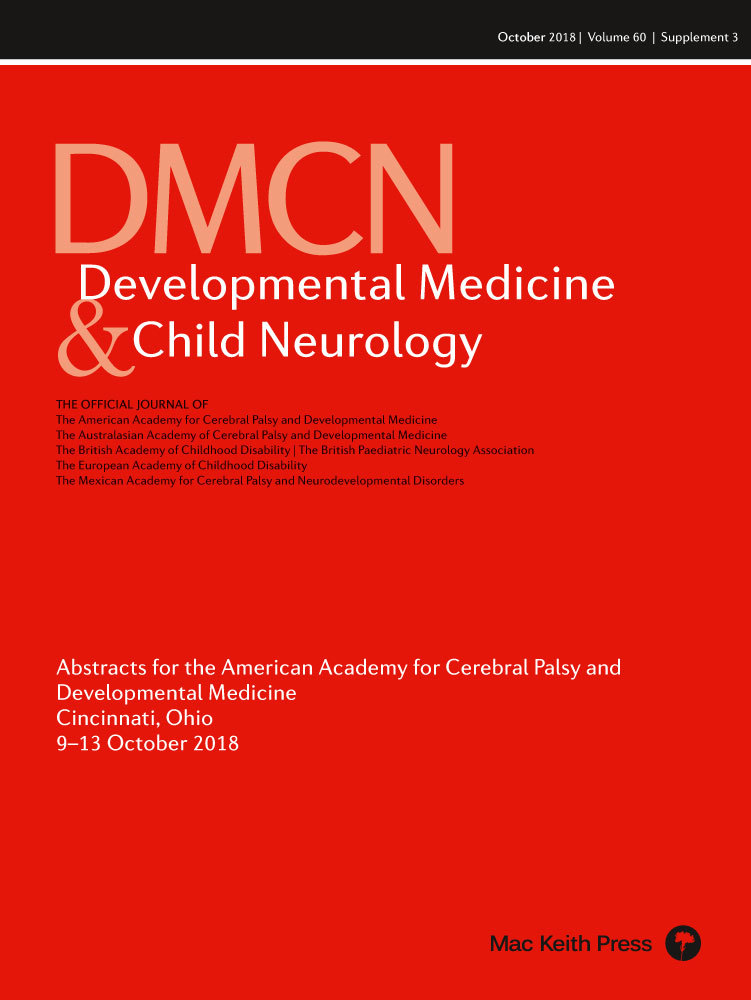Feasibility of a clinical trial to compare high and low technology interventions to enhance prone motor control and prone tolerance in 3–6 months old infants
SP1
T Tripathi1, S Dusing1,2, P Pidcoe1
1Virginia Commonwealth University, Richmond, VA, USA; 2Children's Hospital of Richmond, Richmond, VA, USA
Background and Objective(s): American Academy of Pediatrics (AAP) recommends that “parents should incorporate supervised, awake “prone play” in their infant's daily routine to support development and minimize the occurrence of head deformities such as positional plagiocephaly (PP)”. Prone is often reported as the least “favorite” play position of infants born preterm placing them at higher risk of developmental delays and PP. The purpose of this feasibility trial is to evaluate the potential to complete a clinical trial of high-technology intervention (HTI) that can be used by early interventionists to increase tolerance for prone and positively impact motor development.
Study Design: Parallel group feasibility trial.
Study Participants & Setting: Eight infants born at term with poor prone tolerance were enrolled. The average age was 4.2±7.6 months. The sample was 25 % female, 87 % white and 20 % of Hispanic origin.
Materials/Methods: Infants were randomly assigned to the High-technology group (HTG) or the low-technology, Education group (EG) for a 3 week home based parent led intervention program. The HTG involved use of an instrumented rehab device, prone play activity center (PPAC) (Figure 1), for at least 30 minutes/day. The HTI combined two key elements 1) Positive reinforcement-Through activation of a toy in response to infants raising their head to an individualized threshold 2) Just Right Challenge-By challenging infants to a slight higher toy activation threshold each time they achieve a target. The EG received information on importance of prone play using the AAP brochure. Both groups were followed weekly for parent-interventionist adherence to the interventions. Data on intervention adherence was used to determine the feasibility of the intervention. Group differences in the change in Alberta Infant Motor Scale (AIMS) and Prone Tolerance (PT) were calculated using Cohen's d effect size.
Results: The study had 76% enrollment rate and 87% retention rate. With 100 % adherence to key components of the proposed interventions, the interventionist completed 95 % of total intervention sessions. Parents of infants in the HTG used PPAC for 93–120% of 15 expected sessions. Duration of PPAC used by the HTG was 19.47±8.19 minutes per day. Only 30% of the 15 expected sessions in the HTG used the PPAC for at least 30 minutes/day. However, they reported 24% more sessions than EG with at least 30 minutes of prone play per day. Effect sizes were large (2.5 for AIMS raw score and 2.2 for PT score) and in the anticipated direction.
Conclusions/Significance: This study demonstrates the feasibility of the proposed HTI and its use in a clinical trial. Parents increased prone play time using the PPAC and provided valuable feedback. Large effect sizes suggest a potential for the HTI to support motor development and increase prone tolerance. Future study is needed on the efficacy of the HTI to improve prone tolerance and motor outcomes in infants at risk for developmental delays or with positional plagiocephaly.





